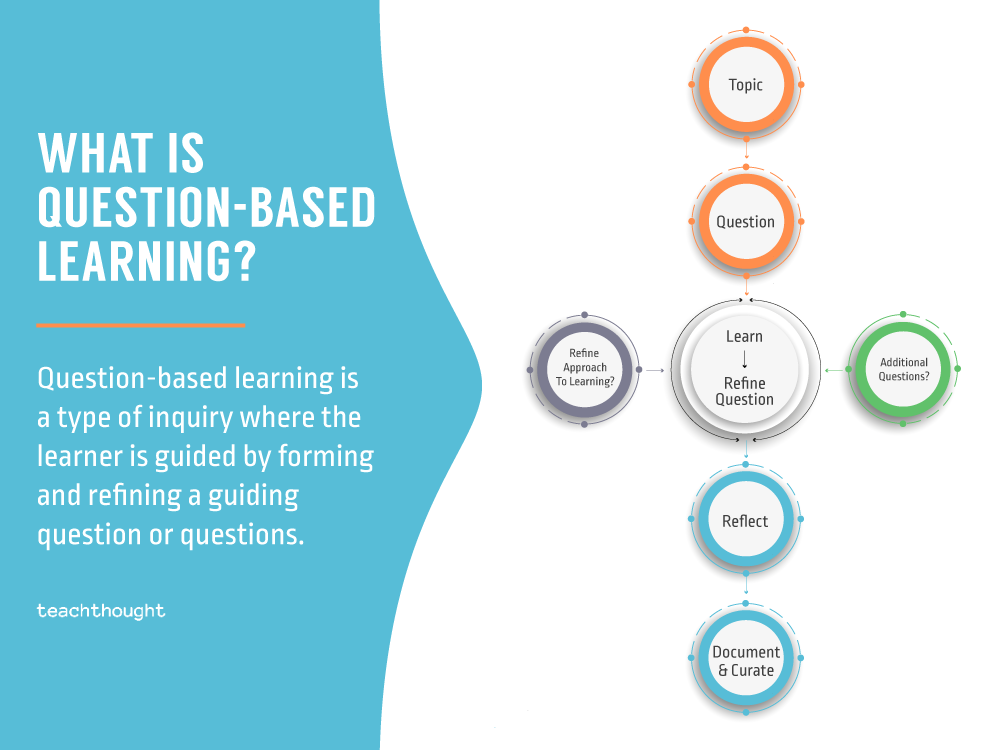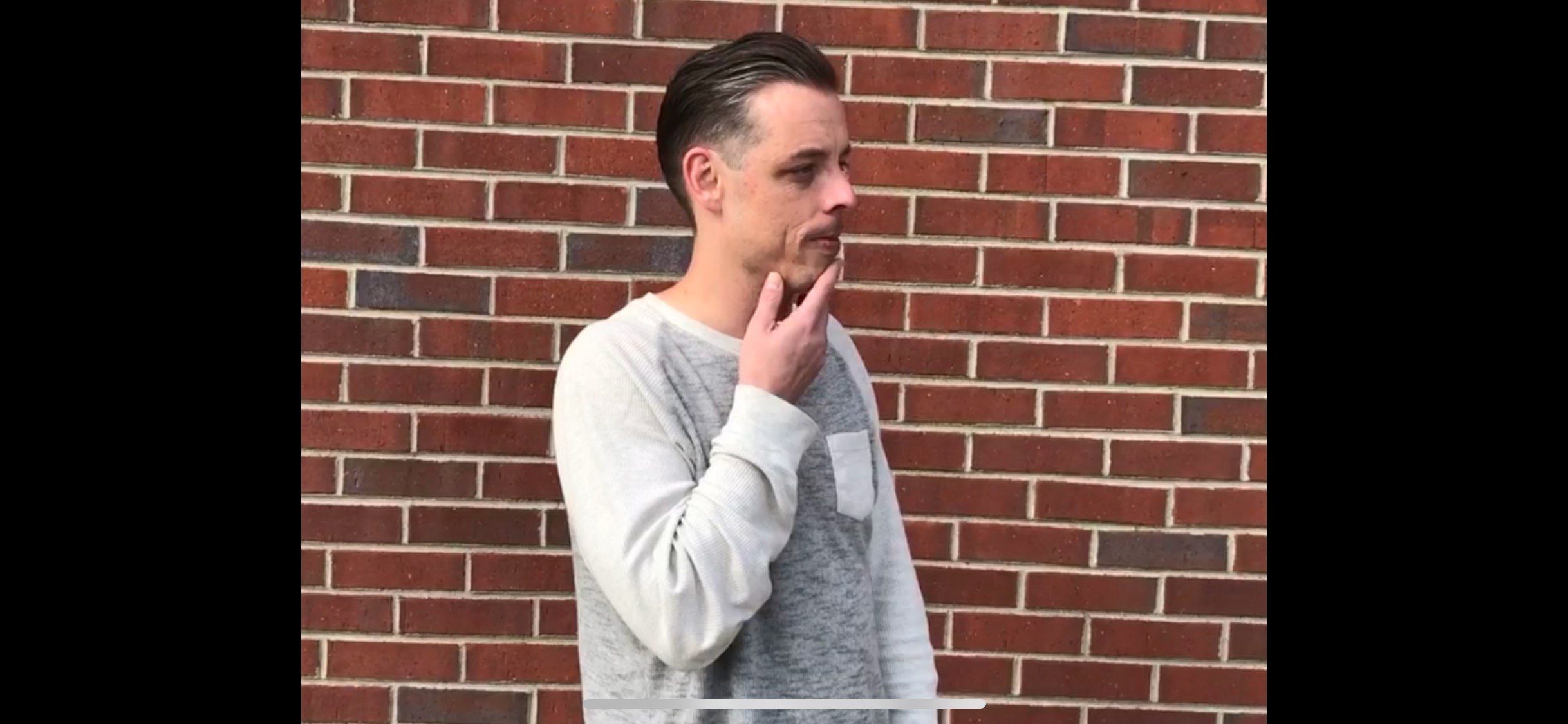
Question-Based Learning: A Definition
Question-based learning is a type of inquiry where the learner is guided by forming and refining a guiding question (or questions).
In this model of inquiry, students are focused on questions rather than answers–which means it’s the quality, refinement, and effect of the questions themselves that are emphasized. This also means that questions can be scored, graded, published, and celebrated in the same way education has traditionally valued answers.
In What’s The Purpose Of A Question?, I looked at the concept of question quality through the lens of question function or purpose: “If the first step in evaluating a question is first understanding its purpose, the second is making sure it achieves that purpose. If it doesn’t, it’s ‘bad.’…
“To be a little more abstract, a good question causes thinking–more questions. Better questions. It clarifies and reveals. It causes thinking, reflection, reconsidering, and maybe even a kind of hope. A bad question stops thinking. It confuses and obscures. It causes doubt.
Two of the most common functions of a question are to assess knowledge (evaluative) or cause thinking (rhetorical). This can be further drilled down into (a nearly infinite number of) subcategories.
Rhetorical Questioning
Purpose: to cause thinking
to cause thinking to cause emotion (for effect)
to cause thinking to cause further/extended thinking
to cause thinking during dialogic interactions
This sounds close to ‘essential questions,’ which are also used to guide learning. However, unlike essential questions, guiding questions are refined and improved during the learning process (whether a single activity or over the course of a project, etc.)
See also 20 Types Of Questions For Critical Thinking
Questions As Assessment
Questions are not only a driving force behind inquiry but can be used as a powerful assessment strategy, too. And to be clear, I mean the question is the assessment item rather than answer questions are generally meant to elicit. Put another way, what a student asks can be more illuminating than any answer they might offer to a question you created.
In the same article, I offered some examples.
“If during the study of the Civil War, a student asks when a battle occurred, we can sense that they are trying to make sense of a specific detail. If they ask why soldiers fought a certain way, they are trying to make sense of strategy.
“If a student doesn’t ask anything at all–well, this could ‘reveal’ a lot of things. It could be a lack of background knowledge or confidence or engagement, or that there really is no room or need for them to ask–or just that they’re assuming a passive learning role at the moment.
“If they ask why the war was fought, they’re making sense of very complex macro concepts, including cause and effect.
“If they ask ‘Is this going to be on the test?’, they’re concerned with academic performance more than the content itself, much less critical thinking and inquiry.
“But another reason these questions are good is due to the source and purpose: a student clarifying their own confusion or following their curiosity. An answer is a kind of culmination or performance–an ending, while a question is a beginning that could lead anywhere.
“Questions are the pulse of any critical thinking classroom. The source, frequency, and quality of questions (not answers) in your classroom are among the best sources of data available to any teacher of any grade level and content area.”
The Sequence Of Question-Based Learning
1. Choose Topic
2. Review clarifying rubric for QBL
This makes sense being done after the topic or skill is chosen so their focus can be on that topic or skill rather than something they merely plug into an activity the teacher is making them do. Question-Based Learning is a strategy for learning, not a process meant to overshadow ideas, thinking, and inquiry.
The better QBL is done, the less visible it will become.
3. Form Questions
At this stage, students brainstorm questions for a period of three to five minutes, marking those that ‘stand out’ for them at the end of the time given. At this point, you can have students offer questions out loud and ‘crowdsource’ this early formation and improvement of the guiding question or questions.
Students will know they’re ‘finished’ with this stage when they have at least one
What are the characteristics of a good guiding question? A quality guiding question is neither too broad nor too narrow; it is ‘answerable’ (or able to be meaningfully addressed) within the time period of the QBL process (one class, one week, one project, etc.); it is open-ended; it suggests, warrants, or otherwise ‘deserves’ careful study and/or is ‘worth knowing’; its relative complexity, depth, breadth, or knowledge demands are accessible to the student
4. Gain New Knowledge (i.e., learn)
The process students use to ‘learn’ is ideally dictated by the circumstance: time/duration of QBL; grade level; digital versus physical learning environment; relative complexity of topic/skill/question, and so on.
Students might learn through direct instruction, watching a video, listening to a podcast, taking a course and pairing that follow-up reading, ongoing research, etc. The possibilities here, of course, are numerous.
5. Refine/Improve Question Based On Learning
This may be done during step 4 or can be done as a separate step.
(If, after the knowledge acquisition stage, no clear ways emerge to refine or improve the question, students may also add more contextualizing ‘good guiding questions.’)
Important: There should be notes and other ongoing documentation of the ways the question or questions have changed along with the causes of those changes. If, for example, a student begins with the guiding question, “How do tornadoes develop?”, after learning they might refine the question a bit, asking instead, “Why is upper-level wind shear so critical to the formation of a tornado?” or “Why do tornadoes only develop in certain parts of the world?”
They would then document the knowledge gained and its source that elicited the refinement of the question. It might be, “Watching a documentary on severe weather, I learned that the environmental conditions necessary for tornadoes are actually relatively rare, which led me to change my guiding question by…”
6. Reflect
During this stage, students will formally reflect on the learning process, including:
Where the learning ‘started’ and ‘ended’
How the question(s) changed and why–or if they didn’t, why that might be.
The source, effect, endurance, and general quality of their guiding question(s)
What they ‘learned’–in regards to content or skills, or the nature of learning and inquiry, their own metacognitive habits, and so on.
7. Document & Curate
Here, students will document the actual inquiry process overall–likely in expository writing with a narrative tone. This is a critical step because the objective is for students to internalize this process of inquiry–which means intentionally reflecting on the process itself rather strictly on the content.
Students should also curate key artifacts, events, pathways, questions, or other ‘parts’ of the learning process. This can be done in the form of a concept map, short paper, video, physical or digital portfolio, or even podcast.
